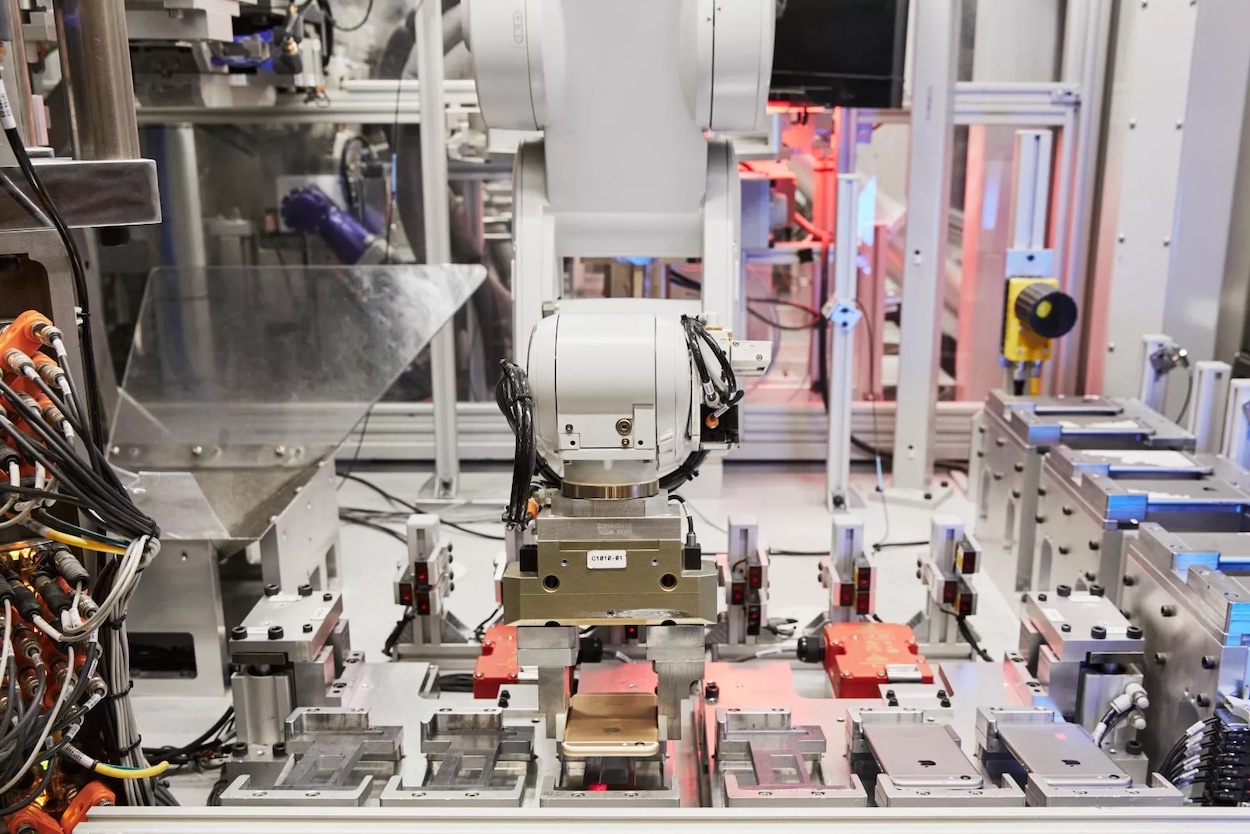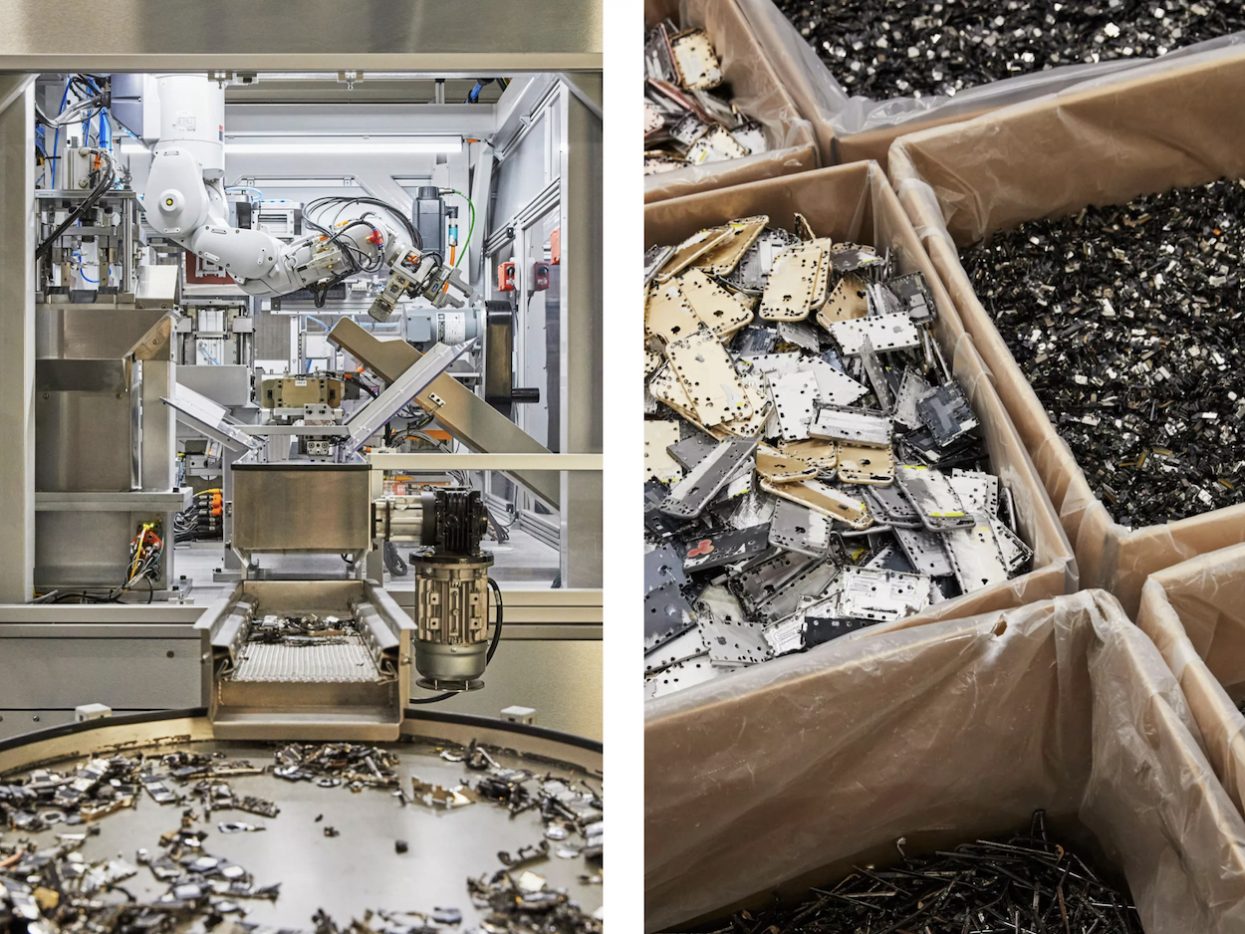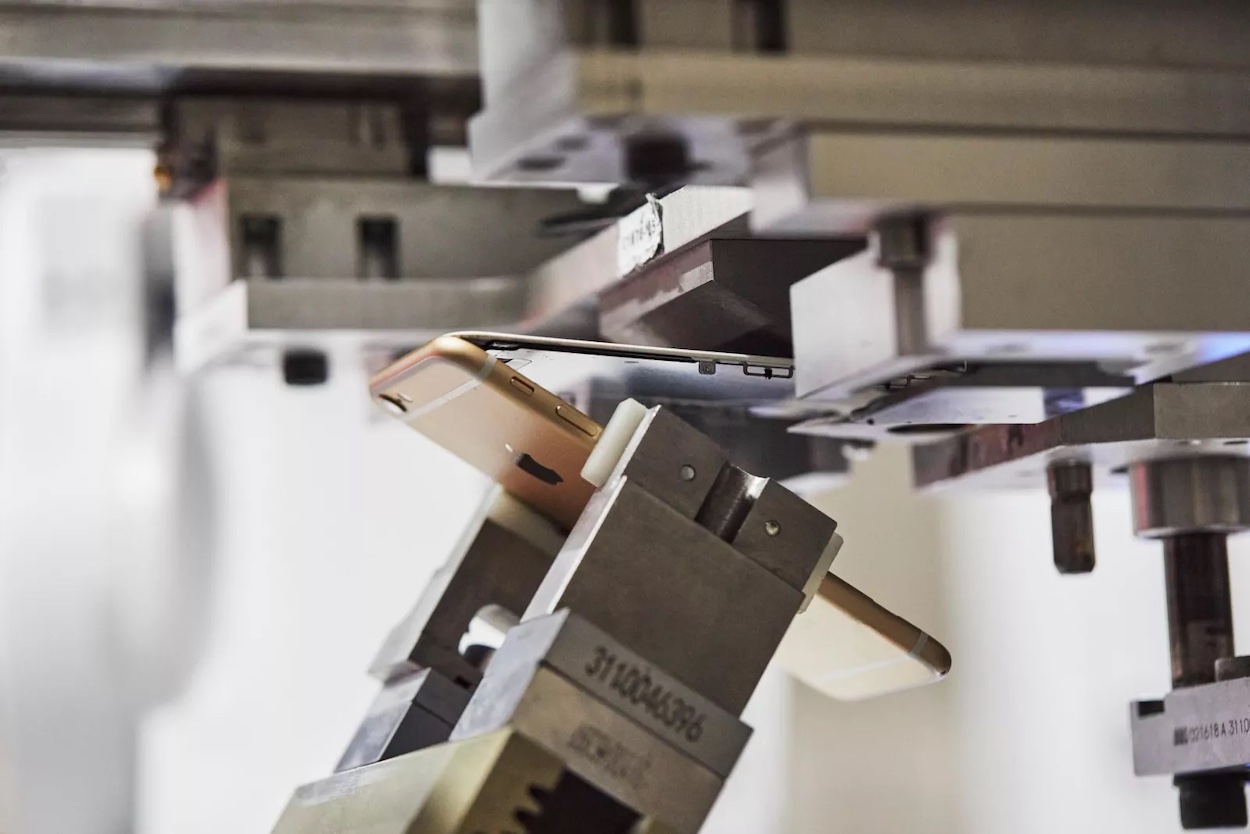When it comes to sustainability, we often view the diminishing ozone layer and the scourge of microplastics as topics of utmost concern. Less frequently acknowledged is e-waste, the onslaught of phones, laptops, televisions, and other electronics we blithely discard when their newer, sleeker iterations hit shelves. Though wireless technology advances mean fewer cords, humanity generated a record 59 million tons of e-waste in 2019 alone—a number the Natural Resources Defense Council expects will increase 30 percent over the next decade. These materials often contain such toxic metals as lead, mercury, and nickel, which can cause respiratory and cardiovascular disease with too much exposure.
Given that planned obsolescence is a key strategy of many electronics companies, what are they doing to combat e-waste? Apple, the tech juggernaut that sells 240 million iPhones per year, has been developing a de-manufacturing robot that can take apart iPhones and recycle interior metals like gold and tungsten. It launched in 2016 as Liam, which could disassemble an iPhone 5S in 12 minutes. After some improvements, Liam relaunched two years later as Daisy, a state-of-the-art robot that can process 23 different models in as little as 18 seconds.
How does it work? Given that a multitude of metals composes a smartphone’s compact innards, Daisy is essentially a five-robot assembly line that breaks iPhones down into 15 component parts. One cell forcefully punches holes around the device’s tiny external screws to open it up; another applies frigid air to strip adhesive from the battery. Once the battery is harvested, Daisy uses sophisticated AI to separate metal components from the phone’s housing, which are then hand-sorted by humans at the end of the chain. Materials are repurposed into newer products—iPhone models use recycled tungsten and gold, and 13-inch MacBook Airs are made with 40 percent recycled material.



